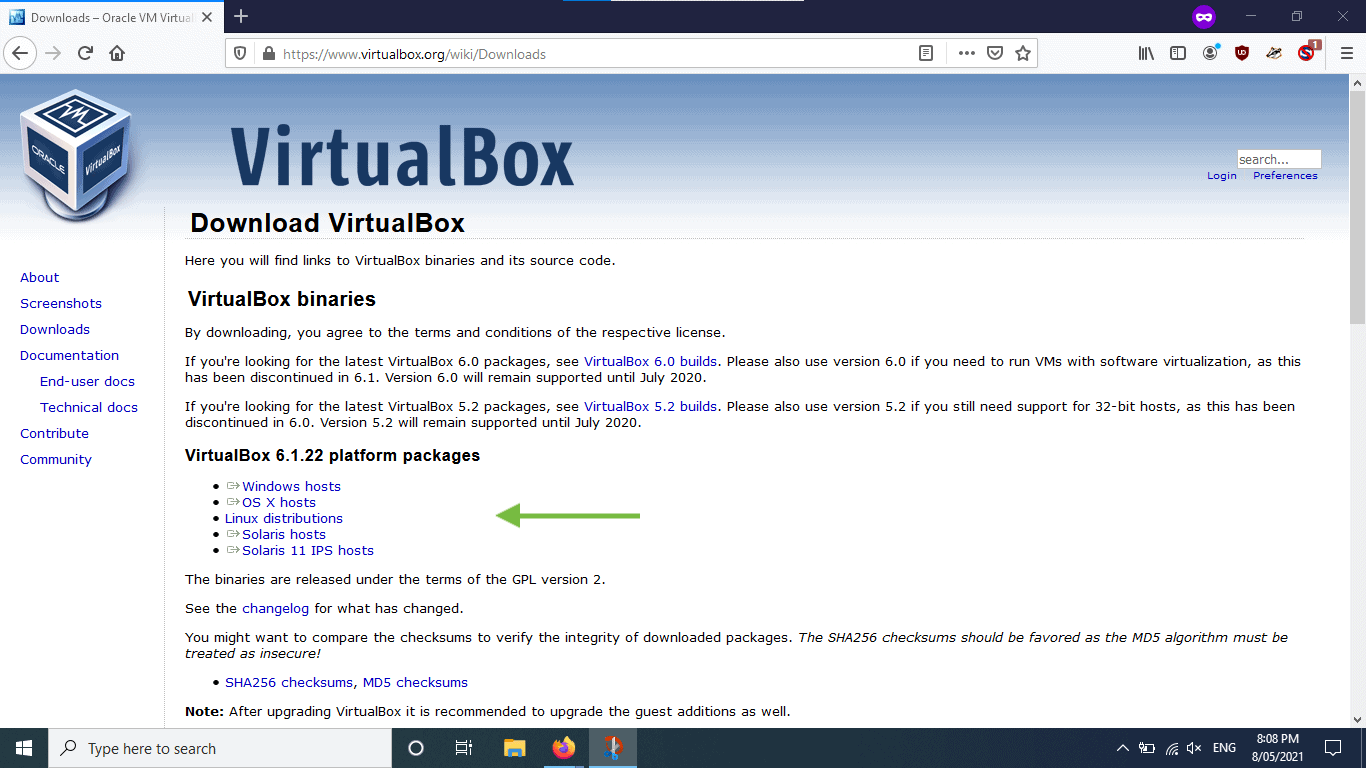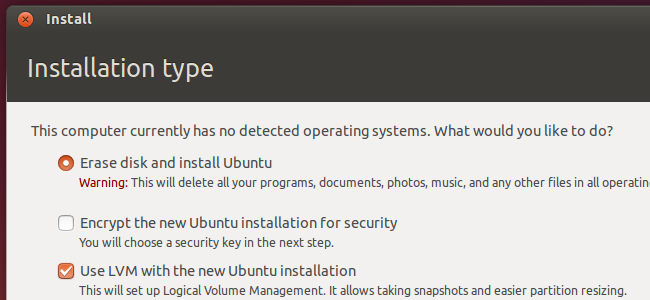

- #UBUNTU LOGICAL VOLUME MANAGER HOW TO#
- #UBUNTU LOGICAL VOLUME MANAGER INSTALL#
- #UBUNTU LOGICAL VOLUME MANAGER DRIVER#
- #UBUNTU LOGICAL VOLUME MANAGER SOFTWARE#
- #UBUNTU LOGICAL VOLUME MANAGER OFFLINE#
#UBUNTU LOGICAL VOLUME MANAGER INSTALL#
To do this, you will chroot into you new ubuntu sytem and install the package in that environment.I was using openSuSE for several years now but for our new family-server I decided to switch to Ubuntu. Finalizing the installīefore you reboot your computer, you need to install lvm2 package into your newly created system. If the partitions are presented like: /dev/dm-X, type ls -l /dev/mapper/, this will help you tracking your volumes. Here we are, no start the installer and when it comes to partitioning, select “manual” and choose the partitions /dev/sda1 (change this according to your layout), /dev/lvmvolume/ for /boot, /, /home and swap. $ sudo mkfs -j /dev/lvmvolume/root -L root #format root as ext3 $ sudo mkfs -j /dev/lvmvolume/home -L home #format home as ext3 $ sudo mkswap -L swap /dev/lvmvolume/swap #format swap as swap filesystem, labelled swap $ sudo lvcreate -n swap -L 2G lvmvolume #create a logical volume of 2G named "swap" in lvmvolume $ sudo lvcreate -n home -L 10G lvmvolume #create a logical volume of 10G named "home" in lvmvolume $ sudo lvcreate -n root -L 5G lvmvolume #create a logical volume of 5G named "root" in lvmvolume Volume group "lvmvolume" successfully created $ sudo vgcreate lvmvolume /dev/sda3 #create a volume group named lvmvolume using /dev/sda3 physical volume Physical volume "/dev/sda3" successfully created $ sudo pvcreate /dev/sda3 #create a physical volume on /dev/sda3 Finally format those logical volumes and install Ubuntu over those volumes. We need to format /boot to ext3 filesystem, create our physical volume on /dev/sda3, create a Volume Group and Logical Volumes for /, /home and the swap partition. OK, now we have our boot partition and our big LVM partition. The new table will be used at the next reboot. WARNING: Re-reading the partition table failed with error 16: Device or resource busy. Last cylinder or +size or +sizeM or +sizeK (1058-9729, default 9729 ):Ĭalling ioctl () to re-read partition table.
#UBUNTU LOGICAL VOLUME MANAGER SOFTWARE#
There is nothing wrong with that, but this is larger than 1024,Īnd could in certain setups cause problems with:ġ ) software that runs at boot time (e.g., old versions of LILO )Ģ ) booting and partitioning software from other OSsįirst cylinder (1033-9729, default 1033 ): The number of cylinders for this disk is set to 9729. Once logged in, open a terminal and install LVM: Installing LVMīoot up your computer using Ubuntu liveCD. In order to be able to do this tutorial, you will need the following:Ģ. Please make sure you have backed-up all important datas. Once the partitions will be created, we will start the installer and point it to the right partition.īecause we are going to modify the hard-drive layout, be aware that you might delete datas.

Because Ubuntu does not support this out of the box, we will have to create and format our partitions using fdisk. In this tutorial, we will install Ubuntu on an LVM filesystem.
#UBUNTU LOGICAL VOLUME MANAGER DRIVER#
For this, it is recommended, that one use the Linux software RAID driver to mirror the underlying PVs to achieve redundancy.
#UBUNTU LOGICAL VOLUME MANAGER OFFLINE#
This can be useful when migrating whole logical volumes to or from offline storage. * Split or merge volume groups in situ (as long as no logical volumes span the split). * Move online logical volumes between PVs. * Stripe whole or parts of logical volumes across multiple PVs, in a fashion similar to RAID0. * Create read-write snapshots of logical volumes (LVM2). * Create read-only snapshots of logical volumes (LVM1). * Resize logical volumes online by concatenating extents onto them or truncating extents from them. * Resize volume groups online by absorbing new physical volumes (PV) or ejecting existing ones. LVM allow you to have better control of your storage. Umount the old one, and mount the new one.Change the mounting information of the partition.Copy the datas from the previous partition to the newly created one.

Using traditional partitioning system, when a partition becomes too small, the only solution left is to: LVM offer better flexibility when it comes to storage management.
#UBUNTU LOGICAL VOLUME MANAGER HOW TO#
This article will cover how to create LVM partitions and how-to generate your partitions from this LVM volume. Unfortunately, at the time this article was written, Ubuntu does not offer such settings with the Desktop Install CD. Using LVM along with ext3 filesystem, you are allowed to extend the size of your logical drives which is pretty handy when running out of space.ĭistributions like Fedora, Suse and Debian have a LVM aware installer. LVM ( Logical Volume Manager) is a great piece of software which allow you to deal with Logical Volumes.


 0 kommentar(er)
0 kommentar(er)
